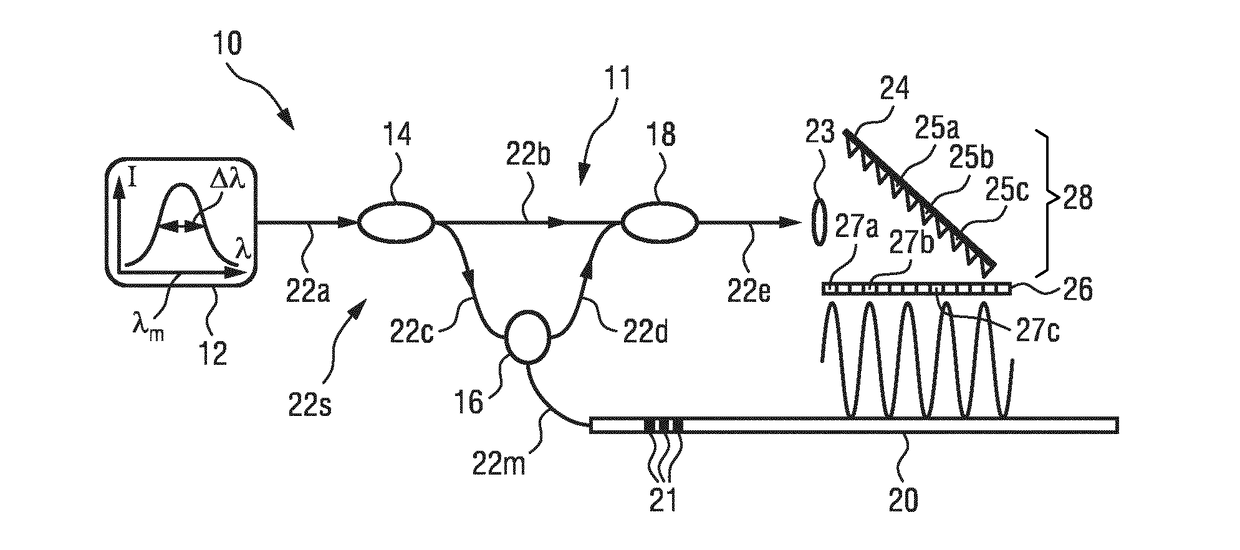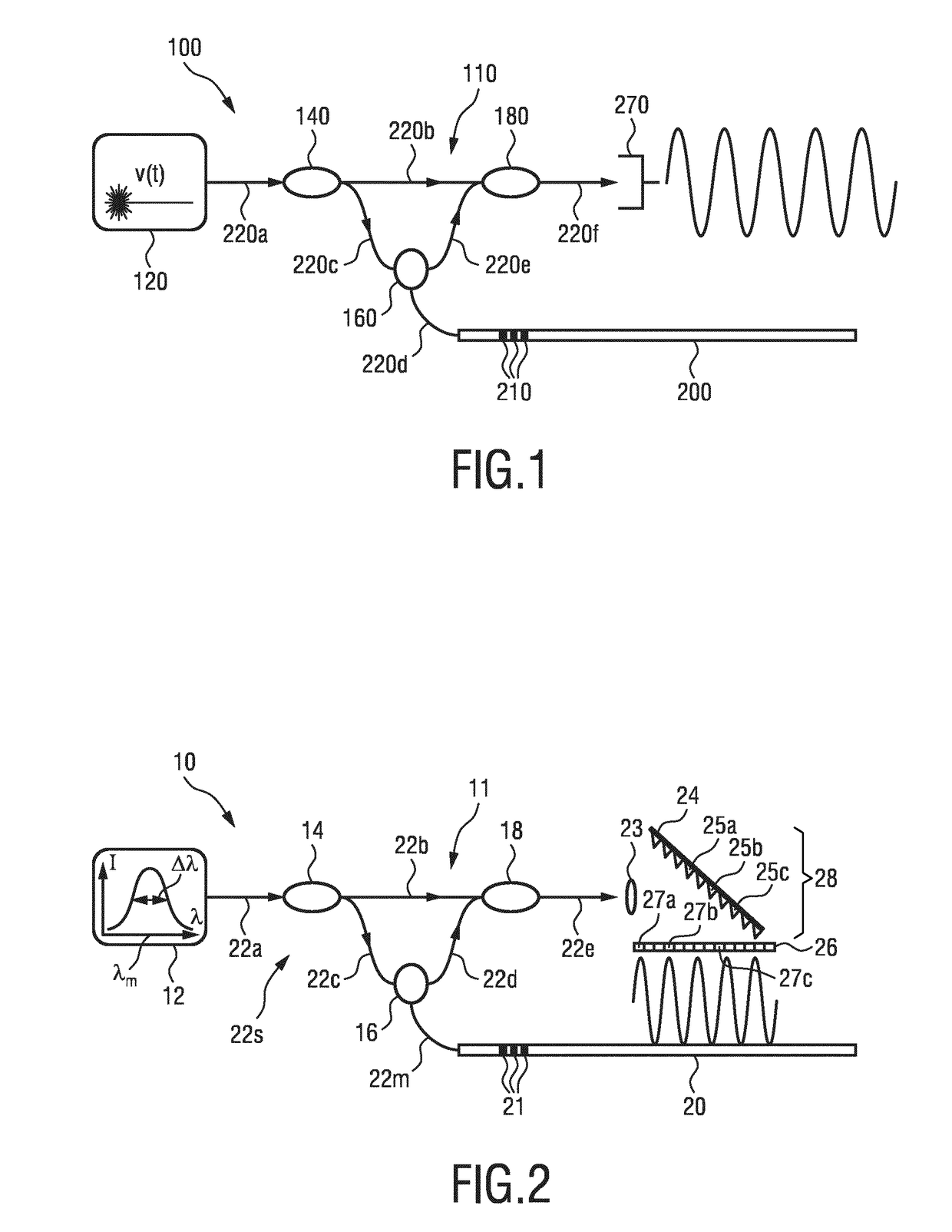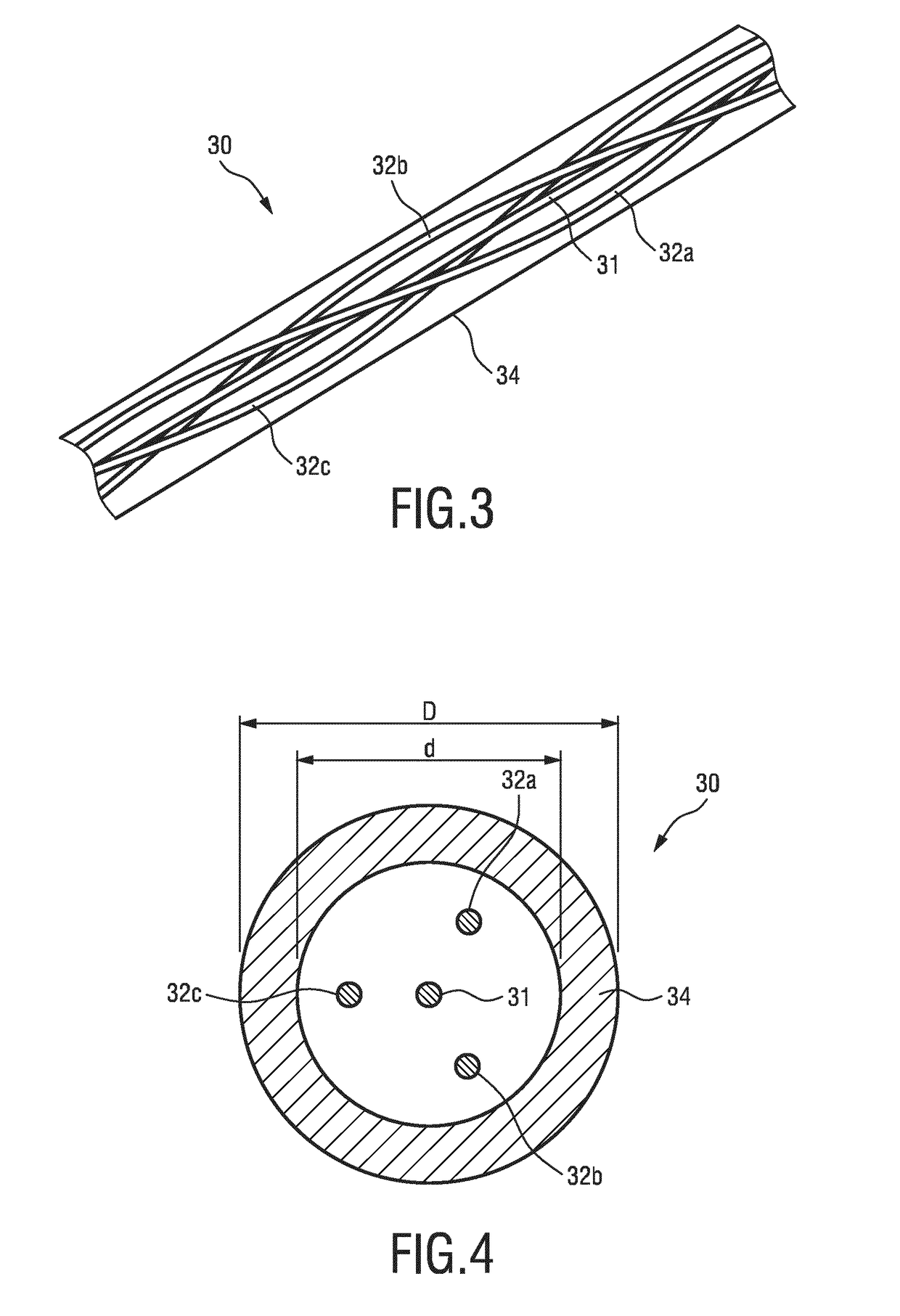Optical shape sensing system and method for sensing a position and/or shape of a medical device using backscatter reflectometry
a technology of optical shape and position, applied in the field of optical shape sensing system and method for sensing the position and/or shape of a medical device using backscatter reflectometry, can solve the problems of insufficient scanning/sweeping speed of the laser, prone to vibration, and insufficiently fulfilling the requirement of the art, so as to avoid the data scrambling of adjacent fiber position more easily
- Summary
- Abstract
- Description
- Claims
- Application Information
AI Technical Summary
Benefits of technology
Problems solved by technology
Method used
Image
Examples
Embodiment Construction
[0042]Optical shape sensing (OSS) may be performed using three techniques: first, strain sensing using spectroscopy; second, distributed sensing using interferometry; and third, shape reconstruction using a special fiber geometry. State of the art techniques in OSS are based on strain sensing which entails the measurement of spectral shifts. Here, the typical measurement sensitivity is about 1.2 pm / με, wherein one με corresponds to a relative length increase of 10−6. In this way, the typical measurement sensitivity is determined by the minimal detectable wavelength shift.
[0043]Interferometry enables distributed sensing with a high spatial resolution. For instance, methods known in the past use a swept laser source or tunable laser source (TLS) so that the various strain sensors measured based on Bragg gratings can be distinguished from one another even when their spectral response is the same.
[0044]Each position within the fiber sensor is characterized by its own beat frequency whic...
PUM
 Login to View More
Login to View More Abstract
Description
Claims
Application Information
 Login to View More
Login to View More - R&D
- Intellectual Property
- Life Sciences
- Materials
- Tech Scout
- Unparalleled Data Quality
- Higher Quality Content
- 60% Fewer Hallucinations
Browse by: Latest US Patents, China's latest patents, Technical Efficacy Thesaurus, Application Domain, Technology Topic, Popular Technical Reports.
© 2025 PatSnap. All rights reserved.Legal|Privacy policy|Modern Slavery Act Transparency Statement|Sitemap|About US| Contact US: help@patsnap.com



